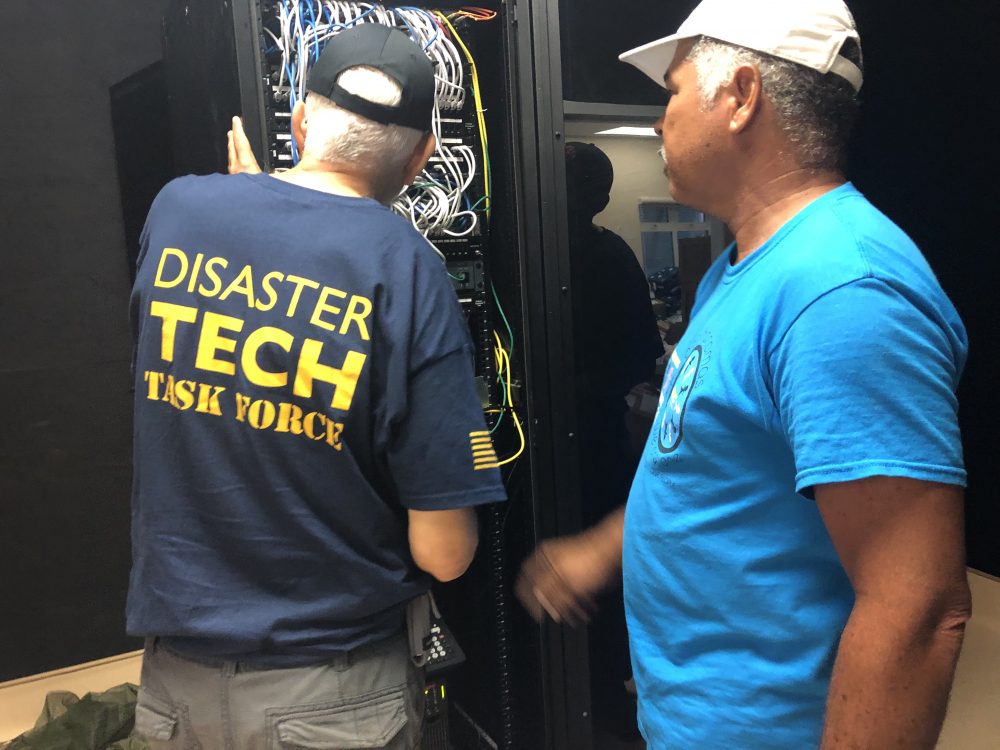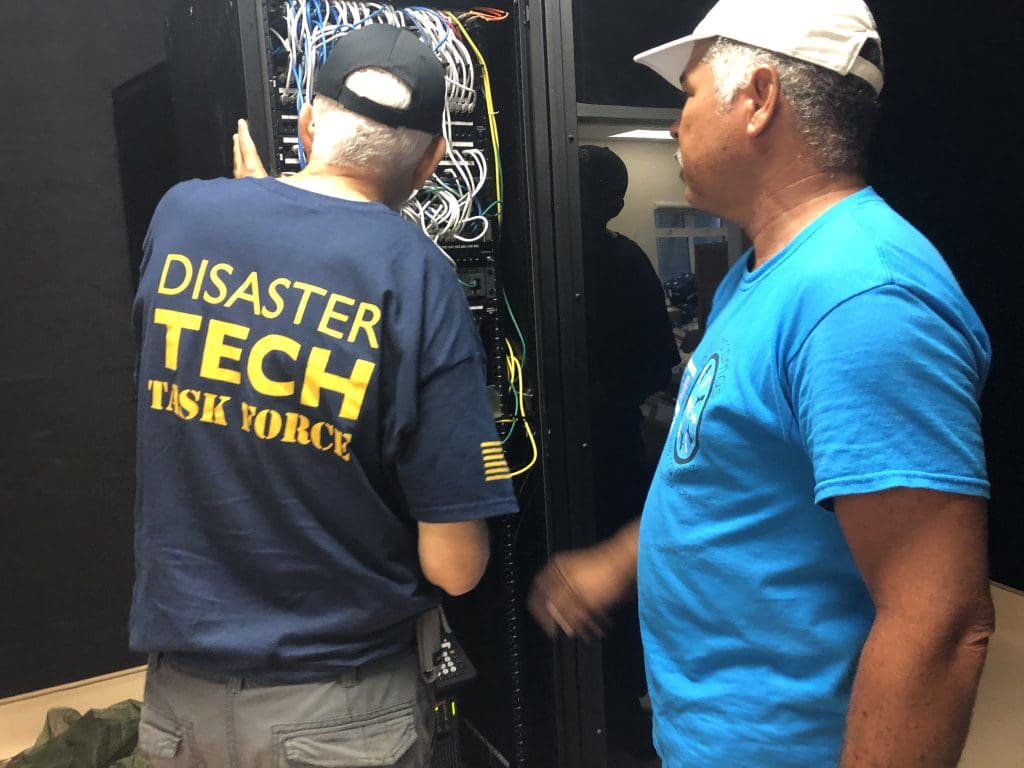Information Technology Disaster Resource Center operations director and co-founder Joe Hillis and his fleet of more than 2,000 volunteers are used to responding to the scenes of natural disasters across the U.S. and helping people in those areas get reconnected with their friends and family. [related]
They’ve never dealt, though, with the so-called “invisible enemy” better known as the COVID-19 pandemic, an outbreak that has ITDRC volunteers responding in more than half of the states across the nation with requests for medical response, emergency management and educational connectivity.
“We’re doing a lot of the same things we normally do, just on a much larger, grander scale,” says Hillis. “When there’s a physical area where we’re able to see the destruction or know the impact, it’s a little bit easier for us to plan and mobilize something into a region. This has been a slow-growing disaster.”
The ITDRC response started at the end of January with the first repatriation flight from China, says Hillis, and has been moving across the U.S. for the past few months. There are requests for ITDRC assistance in 25 states, he says, ranging from additional devices to connectivity for testing equipment to temporary command centers to makeshift educational spaces for students and increased capacity for hospitals.
Life safety is the highest priority for ITDRC resources, followed by mass care and community recovery, says Hillis.
“We want to get the right resources to the right people in the right order,” he says. Early on, ITDRC was fulfilling many of the school-related requests but those have given way to medical and emergency management needs recently, says Hillis.
Most ITDRC volunteers aren’t needed much in the field for coronavirus responses, he says, so they’re focusing on preparing devices and shipping them wherever they’re needed. Because the COVID-19 outbreak has continued to grow across the U.S., ITDRC has called in more people to “keep up with demand” in the warehouse in Texas, says Hillis.
ITDRC volunteers have set up quarantine sites in several communities and provided connectivity resources for them but no staff members or volunteers have been tested for the virus because they haven’t shown symptoms of the illness, Hillis says.
The benefit of ITDRC volunteers being spread out across the country rather than together for a storm-related response, he says, is “if one segment were to get sick, at least it doesn’t take out the entire organization.” ITDRC volunteers are doing the task they’re assigned then going home, says Hillis.
The biggest challenge, says Hillis, in helping during the pandemic is “dealing with so many different entities.” For example, ITDRC has a student-based initiative called projectConnect that’s come with extra bureaucracy “compared to a normal disaster, where anything goes,” he says.
What’s Next for ITDRC
No ITDRC volunteers have encountered any virus-related problems during their response, says Hillis, and he doesn’t anticipate any either.
“Our membership is pretty cognizant of their limitations,” he says. “The people who are in that high-risk group have been pretty upfront and done what we’ve needed them to do from home.
“On the other hand, we have some people used to working in the field all the time. I think they feel in some ways like they’re invincible. They’re always ready to go,” says Hillis.
ITDRC officials polled its members about their willingness to deploy during the coronavirus outbreak, says Hillis. Almost half said do whatever was necessary no matter what, about 30 percent said they’d evaluate the individual assignment and about 20 percent said they’re not comfortable right now.
Hillis has seen “a rapid increase” in ITDRC’s volunteer ranks in recent weeks, in part driven by the fact that many IT and AV integrators have been laying off employees. The agency had one 24-hour period when more than 120 volunteers signed up to be part of the ITDRC, he says.
Many existing ITDRC members have been completing the training that will allow them to be deployed into the field too, a big boost with storm season on the way, says Hillis.
Hillis isn’t sure what the future holds for the country or the world after the pandemic is cleared or a vaccine is created, but he knows ITDRC will play a key role in moving toward whatever comes next.
“There’s a new normal that’s coming. We’re seeing part of it,” says Hillis. “We just don’t know what’s going to remain afterward. We want to make sure we’re healthy as an organization to be able to respond to this. We’re planning for the worst and hoping for the best.”











